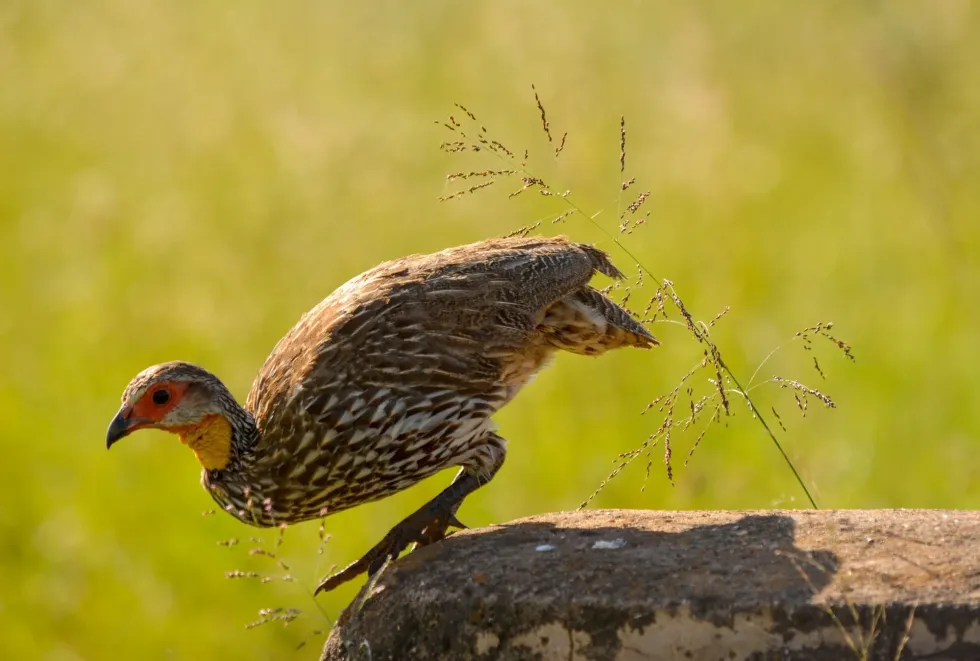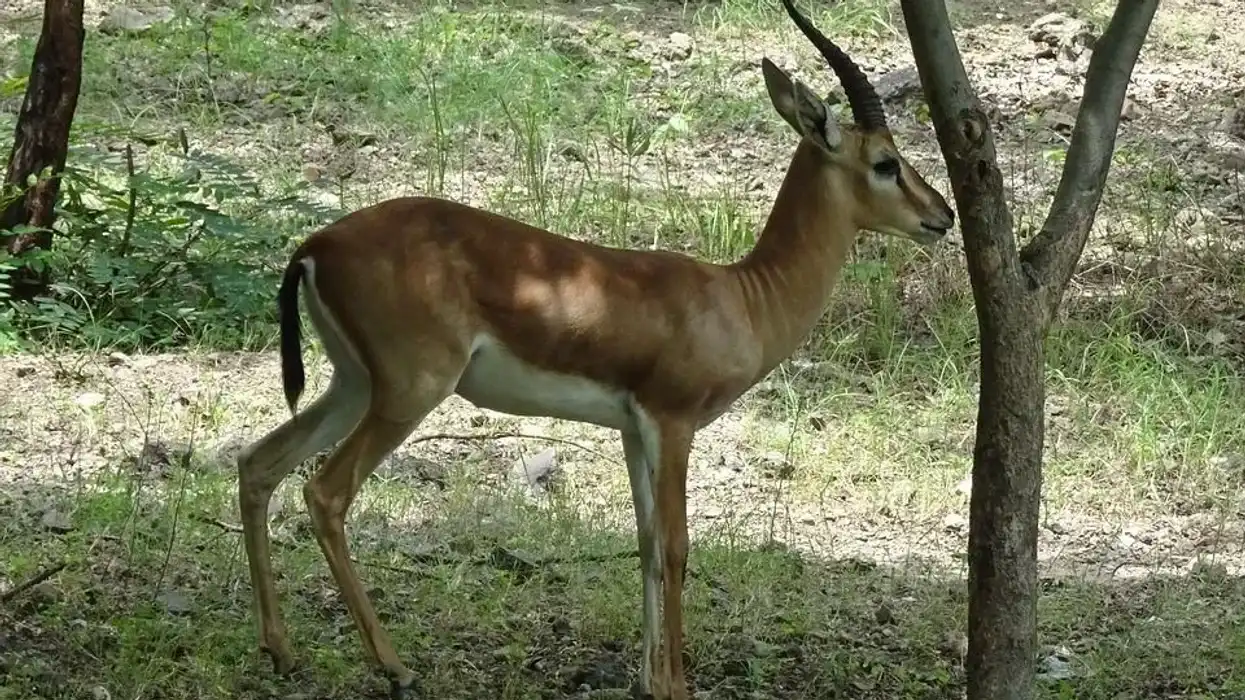The Manipur bush quail (Perdicula manipurensis) is a bird that belongs to the family Phasianidae and genus Perdicula inhabiting grasslands, particularly tall grass. These birds are small in size and are around 7 in (17.7 cm) in length.
This little bird has an olive-gray shade across its body with black bars and spots on the upper surface of the forehead, sides of the face, chin, and throat.
These birds are Endangered according to the IUCN Red List. It is also known as the manipurensis Manipur.
They usually reside in flocks or groups of six to eight birds among foothills with an elevation of about 3280.84 ft (1000 m). It is quite rare to spot these birds in the wild or in captivity as their population has declined drastically.
To learn more about quails, you can also check out these common quail facts and harlequin quail facts.
Manipur Bush Quail Interesting Facts
What type of animal is a Manipur bush quail?
The Manipur bush quail (Perdicula manipurensis) is a type of quail species of birds from the family Phasianidae.
What class of animal does a Manipur bush quail belong to?
The Manipur bush quail (Perdicula manipurensis) belongs to class Aves and phylum Chordata and of genus Perdicula. These birds look quite different from other birds of Aves class.
How many Manipur bush quail are there in the world?
There are an estimated 1000-2499 Manipur bush quails alive today. As these birds are endangered and vulnerable, a minimal number of birds are left of this species worldwide.
Where does a Manipur bush quail live?
The Manipur bush quail's habitat can be found in the northeastern part of India, Bangladesh, and sometimes in Bhutan. In India, it is found in different states, which include West Bengal, Assam, Nagaland, Manipur, Meghalaya also in Bangladesh.
They prefer dry grasslands but are also found in different conditions like wooded areas and vegetation and foothills to the elevation of about 3280.8 ft (1000 m).
What is a Manipur bush quail's habitat?
The Manipur bush quail mostly resides in damp grasslands with tall grass in different parts of the world. It was firstly described by Allan Octavian Hume on an ornithological expedition to Manipur in 1881.
They can also be found in small coveys, in vegetation when they burst out into flight. Most of the time, they are found in grasslands but can also be found in wooded areas.
Who does the Manipur bush quail live with?
These birds of the Perdicula genus are fond of living in groups or flocks of six to eight birds. The government of Manipur is taking strict actions to save the population from becoming extinct.
How long does a Manipur bush quail live?
The exact lifespan of this bird is unknown.
How do they reproduce?
Manipur bush quails breed between January and May, and they make one prominent nest. The female and male both take care of their young.
In one year, around four to six whitish eggs in the nest are made by both the parents on the ground. The females incubate the young, and the males will take care of, and bring food for, the family. The gestation period is not known for this species of quails.
What is their conservation status?
The conservation status of this family of quails has been listed as Endangered and Vulnerable according to the IUCN Red List.
The number of these species is declining drastically and may eventually lead to extinction if proper care and protection are not given.
The government of Manipur is taking serious actions and active measures to save this species of bird from declining and moving towards going extinct.
The population is rapidly shrinking across various parts of the world like mostly in India and some states of India like West Bengal, Assam, Nagaland, Manipur, Meghalaya, and even in some parts of Bangladesh and Bhutan.
The main threats that contribute to their population decline are the drainage and destruction of their habitat.
Manipur Bush Quail Fun Facts
What does the Manipur bush quail look like?

It is one of the smallest birds among the quail species, with a total body length of 7 in (17.7 cm) and a weight of 2.82 oz (80 g). Their tail is 2 in (5 cm) long, with a wingspan of 3 in (7.6 cm).
It is unique and attractive in its own way, with its rich buff belly and vent. It is mostly dark grayish, with a white floral patch, faint eyebrows, golden-buff belly, and vent with heavy, blackish markings.
This species is poorly known worldwide, and its specialized habitat is severely fragmented. The male has a reddish patch under the eye, which lacks in females as they have a gray patch.
How cute are they?
This species of bird is unique in appearance, which makes them cute. They have a variety of colors in their body and have different patterns of wings. They have a reddish patch under the eye, and mostly the males are having this. If you search about them, you will find that they are the smallest bird living in Manipur.
How do they communicate?
Quails have a clear voice that sounds like a whistle 'whit-it-it-t' with the notes becoming higher and running together with the notes. The birds use these notes to call their flock members whenever feeding together or catching prey. These notes are usually made by the male birds to call females sometimes for breeding.
How big is a Manipur bush quail?
The total length of this bird, belonging to the family Phasianidae, is 7 in (17.7 cm), with a wingspan of 3 in (7.6 cm) and their tail is 2 in (5 cm). This is the smallest bird found in Manipur. They are three times smaller than a quail.
How fast can a Manipur bush quail fly?
The exact speed is not specified, but they are fast fliers and can cross from our eyesight within seconds and fly in flocks of six to eight birds.
How much does a Manipur bush quail weigh?
They weigh around 2.82 oz (80 g). The male and female are almost the same in weight but are a little different in appearance. They are 10 times heavier than a bee-eater.
What are the male and female names of the species?
There are no sex-specific names for males or females.
What would you call a baby Manipur bush quail?
The baby of this bird is known as a chick.
What do they eat?
They are omnivorous animals and mainly feed on insects like earthworms, moths, bugs, spiders, and so on. They also feed on seeds and invertebrates. Around 4-12 birds are often found feeding in the open on recently burnt crop areas.
Are they dangerous?
They are small birds and therefore do not cause any danger to humans or any other animals, except for insects and invertebrates.
Would they make a good pet?
It is not known whether people keep them as pets or not due to their rare presence, because of which people should not keep them as pets.
Did you know...
The information of this bird species was first recorded and collected by Allan Octavian Hume, 1881.
Where is the Manipur bush quail native to?
The Manipur bush quail is native to India and Bangladesh, inhabiting damp grasslands.
Who first described the Manipur bush quail?
Allan Octavian Hume, 1881 was the first person to collect information, search about this species and record Manipur bush quail.
Here at Kidadl, we have carefully created lots of interesting family-friendly animal facts for everyone to discover! For more relatable content, check out these Japanese quail and California quail facts for kids.
You can even occupy yourself at home by coloring in one of our free printable Manipur bush quail coloring pages.









